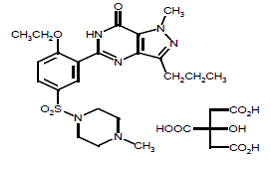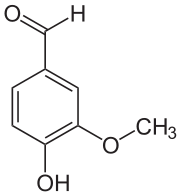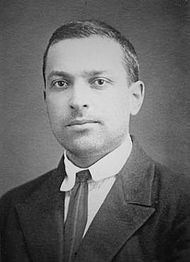A Look Into Scientific Uncertainty
I arrived at Old Faithful to promptly read a sign that stated the geyser would erupt at 12:06 PM. Excited, I moved with the other thousands of tourists in a cattle-like funnel to the boardwalk where we all sat around waiting. I settled in for the next 45 minutes in the level stadium of backless, composite benches. My son leaned over to me; he said the sign also stated uncertainty of +/- 10 minutes. He’s such a scientist, or maybe that’s just what I heard him say. Sometimes I translate regular human jargon into my own scientific words to help me compartmentalize what it is people say. Okay, not too bad. The expected time to erupt would be between 11:56 AM and 12:16 PM. Seeing the mobs of people gather, I pondered.
The employees at the park have collected data for many years on the activity of Old Faithful. I understand from the name, history, and Bugs Bunny cartoons, the geyser regularly spews water. According to the Yellowstone website,
“Old Faithful erupts every 35 to 120 minutes for 1½ to 5 minutes.” (Old Faithful | The Geysers of Yellows…)
This twenty-minute window offered by the park comes from a model they devised based on the last times of occurrences and the length of time for the spout. Great! I get it. And, the time +/-10 minutes sets a pretty reliable expectation.
I continued to ponder this 20-minute window. Let’s start with the longest time interval between eruptions as 120 minutes. The uncertainty of +/-10 minutes results in an 8% uncertainty. We can extrapolate that to the largest possible uncertainty of greater than 50%.
Now don’t get me wrong. I did not mind waiting with the other million visitors each year. (Visitation Statistics – Yellowstone N…) In fact, it appeared that the tourists, including my family and me, found confidence in the timing of the just afternoon eruption. People piled in around the hot spot. Shoulder to shoulder and butt to butt, the anticipation built until the release of hot water and steam shot in the air. Everyone walked away and onto the next “Shamu” show in this Disneyland experience.
I walked away with a different opinion of the experience. I kept coming back to this uncertainty of 8% to 50%. This uncertainty was okay with the audience. They felt certain they would be able to see this earthly wonder in the time frame offered. I even felt certain that I climbed into my seat with time enough to observe.
This comfort with 8% confuses me from a scientific point of view. After all, the park employees were using a mathematical model based on observation and data. That, in essence, is scientific research or an evidence based study. This model allows paying customers to know when to sit. To get real technical, this prediction based on a model or theory which is based upon numerical data and statistical analysis is what scientists do all the time. Do not get confused with the words theory, hypothesis, and speculation. I’ll save that for another blog. In the meantime, Google it!
I thought through some other evidence based studies that are far more important than a silly old geyser. I know there are big issues with scientific studies. Studies that pertain to Autism and the link to vaccines, climate change and impact from humans, baldness, and erectile dysfunction. These are impotent, I mean, important issues to the American general public.
Baldness and Rogaine®
Let’s start with male pattern baldness and treatment foam. We’ve grown accustomed to pharmaceutical ads on the television. One after another frightening us into asking our doctor about looking and feeling better. The side effects are a joke among our household, but the effect should be alarming. Let’s look at Rogaine®. A study of a 2-year application was done in 2015 (Kanti et al. 2015). In the study, one group of participants received treatment for 2 years and a second group received a placebo for one year and the treatment the following year. Here are the results from the scientific journal:
“According to the experts’ photographic review, frontotemporal scalp coverage improved in 35% and 8% in Group 1 and Group 2 respectively; vertex scalp coverage improved in 29% and 33% in Group 1 and Group 2 respectively.” (Kanti)
Though the above study and conclusion of statistically sound data suggests that there is an improvement, I want to focus on the percentages. Let’s take the highest percentage of 35%. This means that 65% of the participants did not improve hair growth in 2-years when applying the treatment. Yet this billion-dollar industry continues to grow. In 2006 ABC News reported,
“Medical therapies, including Rogaine, Merck & Co.’s Propecia and private label brands, add up to $225 million.” (News 2006)
Erectile Dysfunction (ED) and Viagra®
I read through a study of participants ranging in ED from severe to moderate to mild. Here are the results:
“improvement in ability to achieve erections in 68% of patients with ED seen at a urology practice and 71% of patients with ED treated at a center for sexual health…82% achieved success with sildenafil (defined as >75% successful intercourse attempts), with 77% being successful at every attempt. A high level of treatment satisfaction (65%) was also reported in another clinical practice study. In this study, treatment satisfaction was shown to correlate with ED severity (41%, severe ED; 78%, moderate ED; 100%, mild ED) and etiology (56%, neurologic cause; 58%, diabetes; 35%, radical prostatectomy; 89%, psychogenic; 86%, vasculogenic). However, no particular characteristic predicted absolute failure with sildenafil citrate.” (Carson et al. 2002)
Let’s just look at moderate ED. The unsuccessful rate is at 22%. The image below is the molecular model of sildenafil citrate. I placed it below to make this article look scientific. People love pictures. By the way, look closely, the elements involved are mostly Oxygen, Hydrogen, Carbon, and Nitrogen.
 1-[[3-(6,7-dihydro-1-methyl-7-oxo-3-propyl-1H-pyrazolo[4,3d]pyrimidin-5-yl)-4-ethoxyphenyl]sulfonyl]-4-methylpiperazine citrate
1-[[3-(6,7-dihydro-1-methyl-7-oxo-3-propyl-1H-pyrazolo[4,3d]pyrimidin-5-yl)-4-ethoxyphenyl]sulfonyl]-4-methylpiperazine citrate
(Viagra (Sildenafil Citrate): Side Eff…)
Not to get too far off topic, here is another interesting image. Can you guess it?

It is the aromatic organic compound named vanillin. It is what gives the smell and taste of vanilla. (Vanillin – Wikipedia)
Climate Change
Between 2009 and 2013 there have been over 17,000 publications of climate change (Husain and Mushtaq 2015). In a 3 part study around 2014, Moberg and others built a model based on climate change to predict the reading of solar forcing in tree ring patterns. They choose to limit their readings and evaluations to a 5% uncertainty (Moberg et al. 2014).
Most articles and data driven results came from outside the United States. In my few hours of research, I found an article on Florida’s Rookery Bay Estuary with similar results (Lammers et al. 2012).
Another article I read through discussed streamflow and direct human impact throughout the United States based on the Budyko Hypothesis. The results were within a 2% error (Wang and Hejazi 2011).
Again there are thousands of research articles from human usage of chlorine and bromine effects on climate change (Anderson et al. 2017) to the radical changes in elder care due to the 11.5-degree increase by 2100 (Carnes et al. 2014).
Autism and Vaccines
I know this is a touchy subject. While I cannot sympathize with my friends and totally understand the energy and time put into raising a child with Autism, I can empathize and support my friends. I understand that the onset of Autistic symptoms coincides developmentally with the timing of vaccines. A common phrase among science teacher, I hope, is “Correlation does not imply causation.” I do suggest reading Wikipedia’s examples of this (Correlation does not imply causation …).
This was Wakefield’s attempt in his study. He has been stripped of his medical license, and
“Wakefield has been unable to reproduce his results in the face of criticism, and other researchers have been unable to match them. Most of his co-authors withdrew their names from the study in 2004 after learning he had had been paid by a law firm that intended to sue vaccine manufacturers — a serious conflict of interest he failed to disclose.” (CNN, 2011)
With that said, it does bring me peace that there are millions of children surviving childhood in a healthy fashion due to vaccination. From 2013, a study on Autism and Vaccines revealed a 5% uncertainty that Autism and Vaccines are NOT related (Taylor et al. 2014). Whether you trust the government or not, the CDC has concluded based on evidence based studies the same figure (Vaccines Do Not Cause Autism Concerns…).
Perspectives and Conclusion
Based on scientific data and observation the uncertainty goes something like this..
Rogaine – 65% unsuccessful
Viagra – 22% unsuccessful
Old Faithful timing – 8% uncertainty
Climate change – 5% uncertainty
Autism NOT linked to Vaccines – 5% uncertainty
There is no real conclusion here. I put forth these numbers because fear and insecurity drive our vanity and decision making. I put these in front of you to make an educated decision. The masses listen to untruths, false “facts”, and distant truths in daily, political, and family decisions. It is time Americans take back their education. The information is literally at our fingertips to find out what is true and what is not.
But maybe, this is where our society is inevitably headed. Pixar may have predicted a lazy society in the movie WALL-E. Eton Cohen and Mike Judge may have predicted an even bleaker society of ill-educated citizens in Idiocracy. Franny Armstrong’s The Age of Stupid might be a good prediction of climate change.
